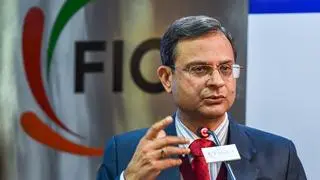The economy had been showing signs of recovery since early 2015: inflation tapered, current account deficit shrank , crude oil prices halved and the stock market was bullish despite the generally grim international situation. With a strong push, the economy had every chance of moving forward with momentum, possibly surpassing even China to achieve the highest economic growth.
The Budget carries forward the ‘Make in India’ mission aimed more effectively at defence production. Some of the tax measures will facilitate inflow of foreign investment in a variety of forms and also promote exports. Finance Minister Arun Jaitley has heavily underlined the need to invest in housing, electrification and education. This combined programme will also create demand for a variety of industrial products.
True to his word, the finance minister has taken the first step to bring the corporate tax system in line with internationally accepted norms. Corporate tax will be reduced in four stages to 25 per cent in four years. This is the rate of taxation prevalent in countries such as Indonesia, Malaysia and China. The simplified lower rate will be a great draw for investment by domestic and foreign investors. The implementation of GST from the next year will aid a shift to the system of indirect taxation, facilitate trade, and expand the resources with the Centre and the States. Similarly, the National Agricultural Market will remove regional imbalances in the supply of agri-products, ensure a better price for the farmer, and keep a check on inflation.
Fiscal disciplineThe finance minister underlined the need to develop infrastructure, which has remained a weak spot in the development matrix.
In the present Budget, investment in infrastructure will go up ₹70,000 crore. Tax-free infrastructure bonds and the National Infrastructure Finance Company will help garner financial resources for infrastructure development.
The finance minister has made a special effort to introduce fiscal discipline. The Budget Deficit has been restrained and will be brought down to 3 per cent in three years. This will make it possible to check inflation and bring about better integration between fiscal and monetary policies.
The increase in investment has to be matched by increase in savings in order to prevent overheating of the economy. The changes in the pension schemes and the increase in exemption limit for health insurance will increase national savings and the reduction in the government’s fiscal deficit will reduce the diversion of savings to consumption. The finance minister has thus been able to combine development with social security to ensure that the benefits of development are shared by all sections of society.
The writer is Chairman, RP-Sanjiv Goenka Group








Comments
Comments have to be in English, and in full sentences. They cannot be abusive or personal. Please abide by our community guidelines for posting your comments.
We have migrated to a new commenting platform. If you are already a registered user of TheHindu Businessline and logged in, you may continue to engage with our articles. If you do not have an account please register and login to post comments. Users can access their older comments by logging into their accounts on Vuukle.